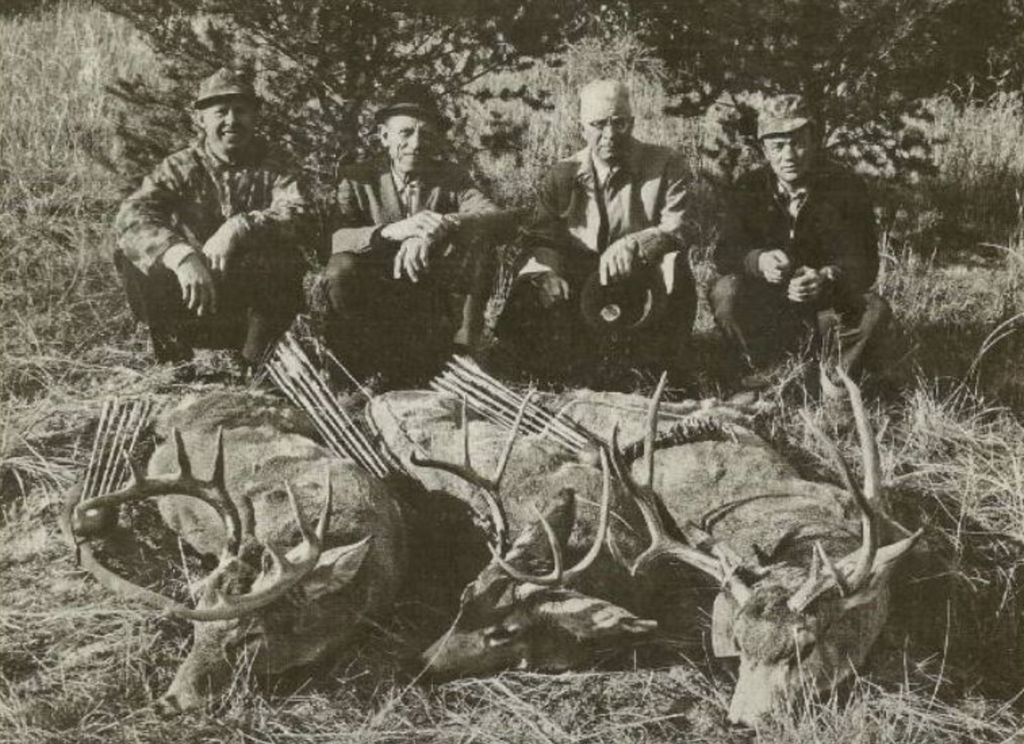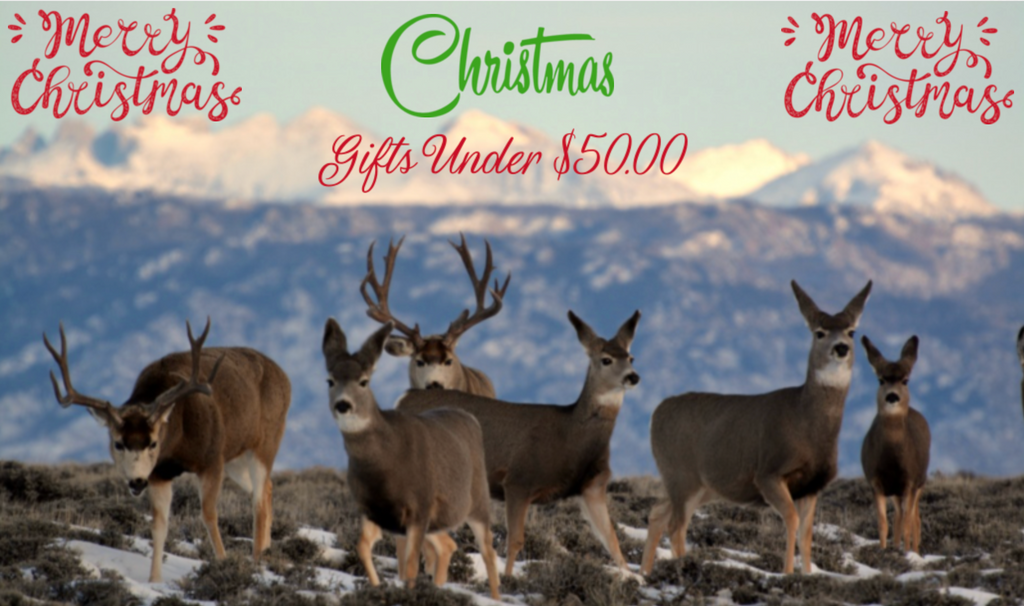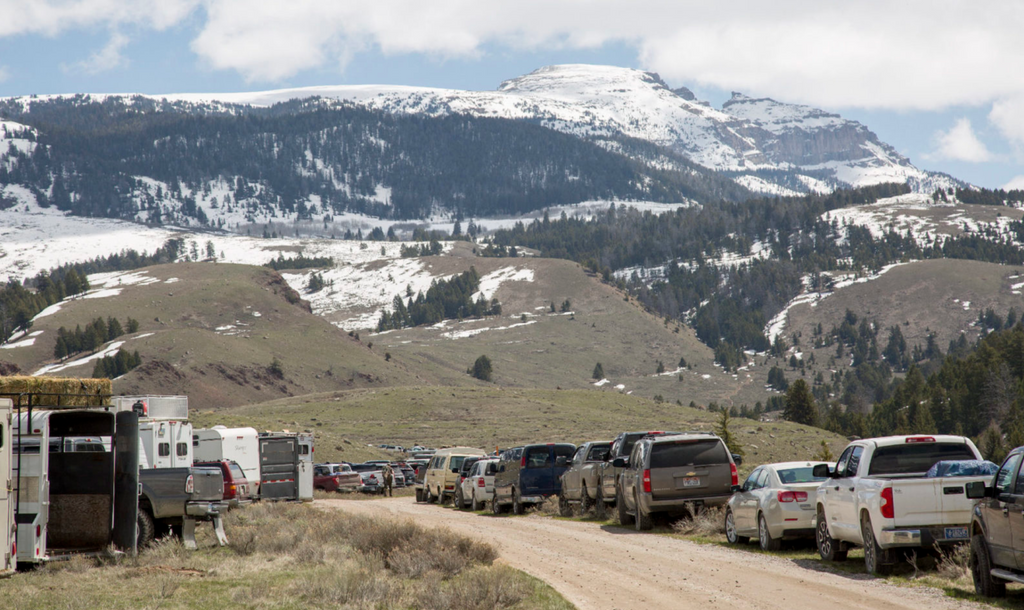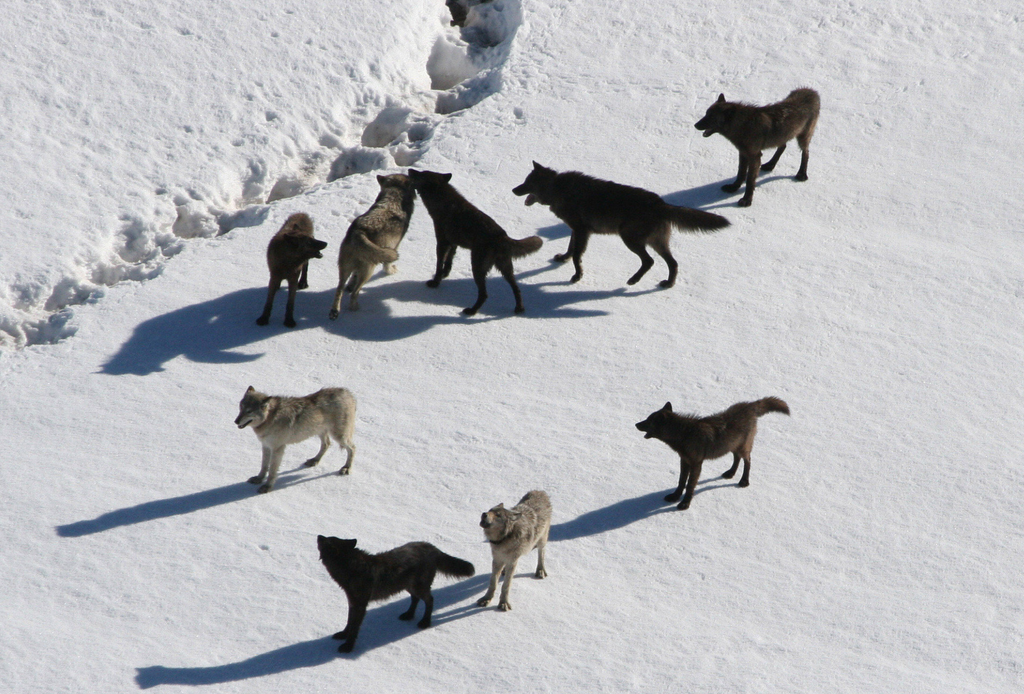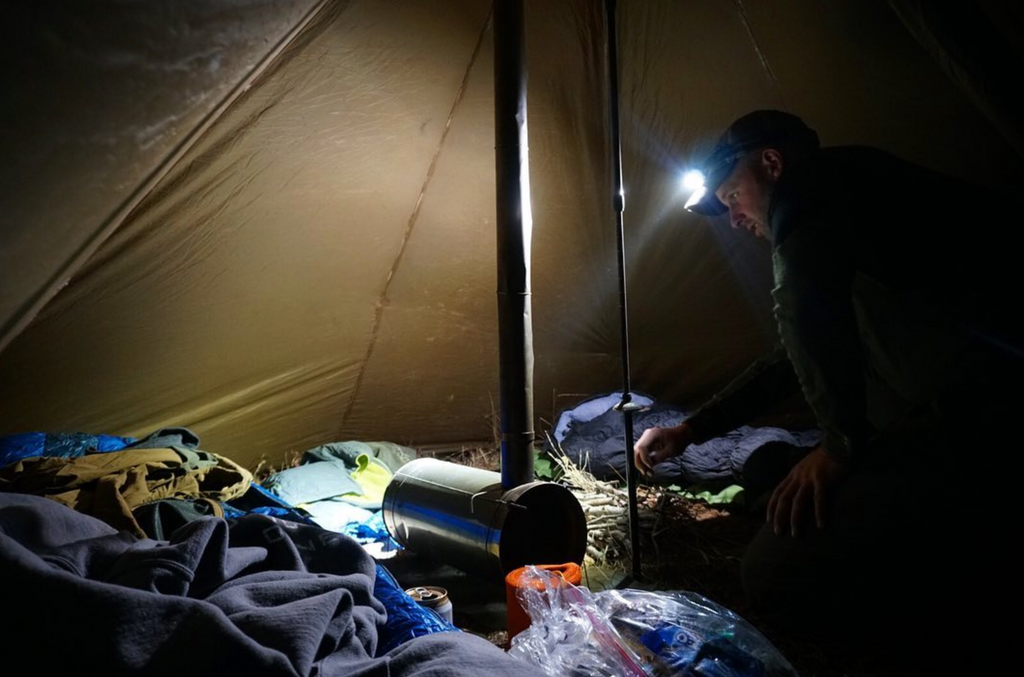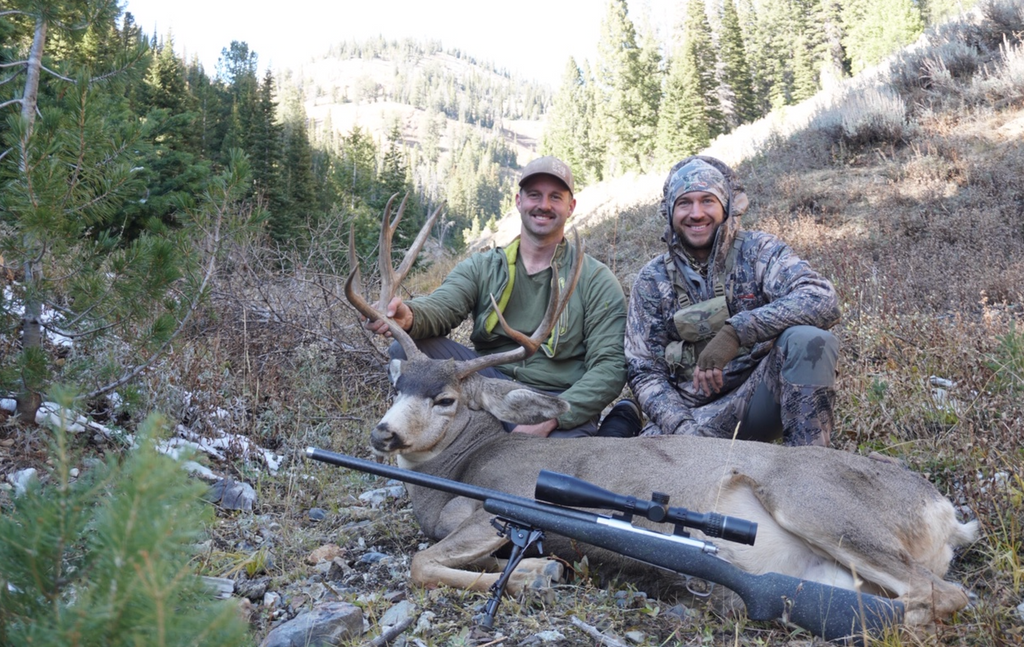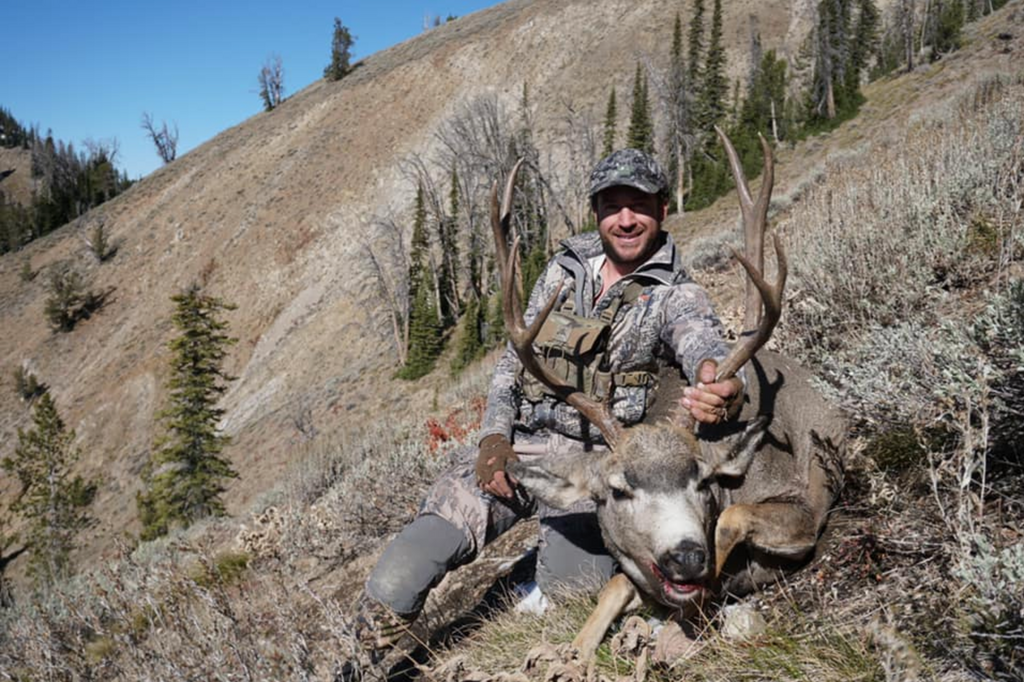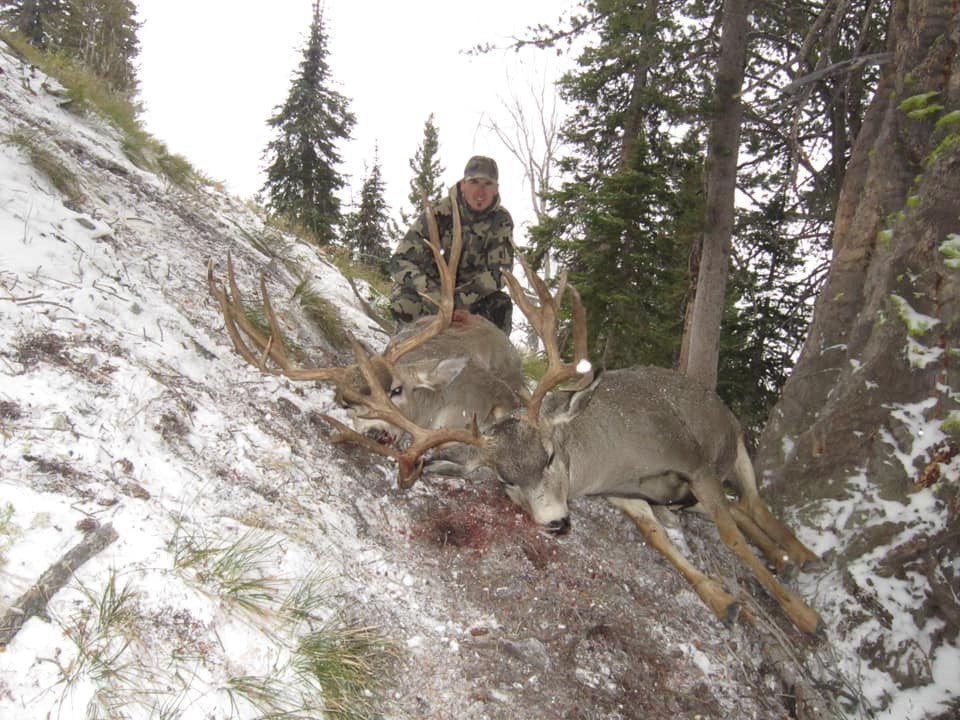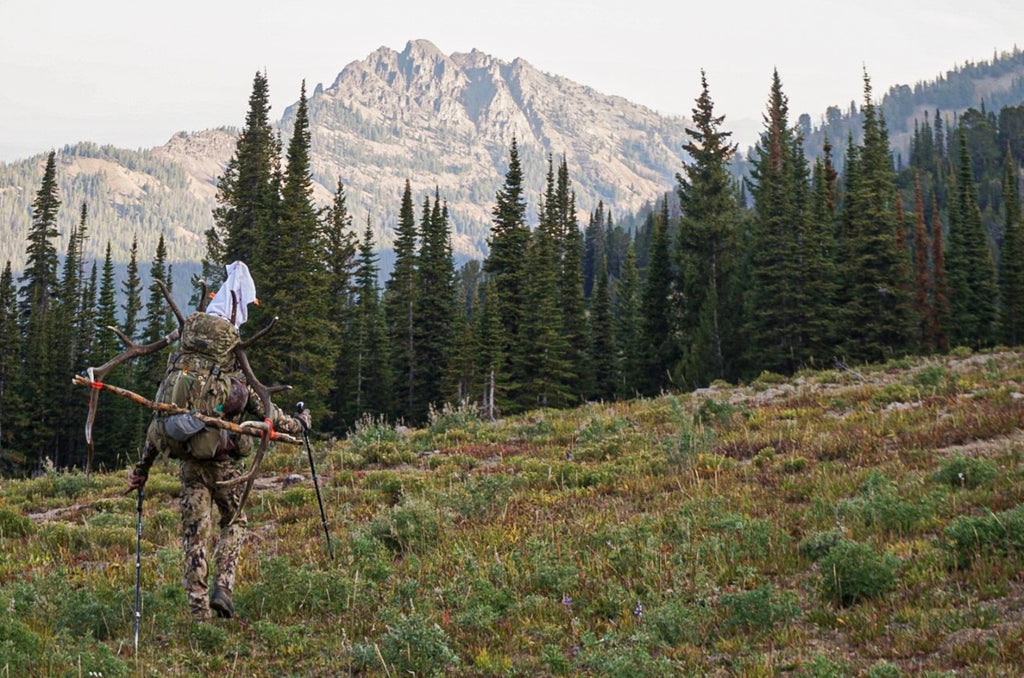Riverton's Reviews, Videos, & Stories
Supplements & Fitness In The Hunting Community
Late Season Hunting Gear Under $50.00
Top 10 items all late season hunters must own. All items are under $50 and are hands down the best gear you will own for late season hunts. They will help you outhunt anyone else on the mountain lasting longer, warmer, and more comfortable.
Over the course of 5 years during the later archery season I have fine tuned the best gear to have on these late hunts in Idaho. Here are my top pieces of hunting gear for late season hunting under $50.00.
How To Hunt Pressured Areas Effectively - (Mule Deer Hunting)
Do not underestimate Pressured Hunting Areas.
This is the time of year where everyone, kids, grandparents, and of course “out-of-staters alike are hitting the hills for a mule deer buck. Aww yes, the cold crisp hillsides are being filled with lead which sounds like its coming from a semi auto rifle. The skies are being polluted with gun powder and camp fires as we speak. Aww the sign of late October hunting!

It’s no secret the mule deer migration is what all these hunters are banking on… it’s the talk of the town how many out of state plates the locals are seeing and the shocking stories of where these wall tents are being placed. As the tail end of October arrives the hunters are not holding out for a big buck. Anything with horns grandpa, son, and wife alike are taking a crack at!
Don’t be alarmed and don’t get “let-down” when you see a full parking-lot… it is anyone’s game but your chances are greater with the following advantages:
Advantages:
- If you’re a great shot, have a lethal weapon with a great scope. Those that can shoot well long distances will have the upper advantage. Think of a senior football player setting into a JV game… it’s yours for the taking!
- You’re in shape, not afraid to climb steep mountains, and don’t have a problem hiking in the dark (morning or night).
- You plan on spike camping on the mountain with a shelter. The advantage waking up and being right where you want before the rest of the zoo gets there. You can also hunt later knowing your camp it’s too far like the trucks down at the road.
- You plan on hunting with a buddy. Here you have more eye working the hills to check game before the other guys can, working together increases your odds and it help for an easier pack out.
- Having a meat hauling hunting pack. Here you have the advantage of being able pack out a deer effectively by quartering him out with your meat hauling pack. Harvesting a deer in snarly spot doesn’t look so bad anymore.
- Good glass (binoculars) / spotting scope and tripod. This time year is not new to these big old bucks on the migration, they stay hidden. Finding them before anyone else does is the key and with the right glass, knowing where to look and spotting them effectively can make all the difference.
- Stay positive and work hard. Sometime having a positive attitude is all the difference you need. Doubt your abilities and you can doubt your success!

Here are 3 key things to grasp about heavily hunted areas:
- First of all, if there was not wild game in the area nobody would come back, so clearly something is keeping the hunters coming back. Most likely it is a good area for deer to migrate in and decent bucks are coming out of there.
- Second, patience kills bucks and even big bucks. Get up high stay put where you can glass and let the other hunters around you that cannot be patient or play the wind correctly to do the hunting for you. Countless times I have heard of guys killing bucks (and some great bucks) by others jumping deer they didn’t even know were there by having their gun ready and set up for anything to happen. Let me tell you, it works!
- Being effective with your rifle scope; getting on your glass quickly and pin-pointing game through the rifle quickly will be key in heavy hunted areas. Deer are being pushed and bumped, your time to get a shot off can be limited. Being able to work your rifle scope effectively can be the difference.
Don’t know where to start… Check this out:
Typically calling a biologist or fish and game and ask them where the wintering migration is you might get some great intel, but don’t worry they have shared that a million times so don’t think you are getting the holy grail.

Just in case you find an area early and what to know if it gets hit hard later in the season… check this out:
If you fell in love with a new area during scouting Plan to come back again closer to season to check how "busy" the area might get. Ultimately you want to see if camps being put up, check to see if there has been an increase in foot traffic on the trail your using and of course is the quarry you’re after still there? Key tip; dust off the trail in an area to provide intel on how often it gets used while you are gone (game or humans).

Most of all, pack out what you pack in, obey hunting rule and regulations, and install quality sportsmanship among fellow hunters and to the youth.
Health & Fitness For Hunting
| THREE KEY INGREDIENTS TO MAINTAIN FITNESS FOR HUNTING |
With the outbreak of COVID-19 there is no better time to release this article I wrote a while back that had yet to be published. The key information will help you avoid getting sick from most all virus and keep you healthy, strong, and living a long life. With a background in health, fitness, and nutrition these sort of things come easy for me but not for everyone else. It takes time, dedication, persistence, patience, and willpower / willingness to want to change for the better.
To put it in perspective, the country's obesity epidemic has grown significantly worse since the turn of the century, just about 44% of Americans are obese, in just about 1/2 (1 out 2 people randomly chosen are overweight). So that means, just about half of you reading this struggle with this topic. So lets begin....
There is no denying we would all love to keep our body as healthy as possible 24 hours 7 days a week for 365 days a year. Am I right? Of course. So, the real question is how can we do it? And the answer is simple, KEEP YOUR BODY ANABOLIC. Now how do you do that you ask. Allow me explain.
|
There are 3 key players in keeping your body in an anabolic state:
|
REST AND RECOVERY
- Let’s start with proper rest and recovery. This requires adequate sleep and rest between workouts, in which case creates idea optimization for hormonal balance and protein metabolism. In layman’s terms, try to get 7-8 hours of undisturbed sleep at night and don’t overdo it on your everyday workouts. If you can manage these two, your body’s hormones (in a resting state) can properly strengthen muscle tissue overnight! Think of it like a plant, give it sun and water it will continue growing and strengthen overnight. Leave one without the other and it will not.
At night, while resting... your metabolism works like a mechanic and your vehicle is your body. It’s a little difficult for mechanics to work on your car when it’s constantly running. The ideal time with the greatest amount of growth hormone is released into your body is when you are asleep. Providing them with enough rest and let the mechanics do the work.

What exactly is your metabolism doing while it’s resting? Well, your body is made up primarily of protein (found in your bones, muscles, and tendons…etc) and additional protein is needed to be broken down and utilized in the body for repair, growth, and or converted into glucose or triglycerides to build back your energy. This functionality happens ideally when you are sleeping. This leads to proper nutrition.
| PROPER NUTRITION |
- To keep your body consistently healthy and continue growing, you must consistently be eating healthy. Never let yourself fall off the healthy nutrition eating train, keep yourself on the tracks! To do this, you must consume well balanced healthy foods, combining primarily carbohydrates, protein, and Branch Chain Amino Acids (BCAA’s). The quality BCAA’s I am talking about are composed of 3 amino acids; leucine, isoleucine, and valine in which your body must get from your diet. In conjunction with hormone growth, these amino acids are crucial in maintaining an anabolic state. They help aid the protein breakdown for protein synthesis. I will touch on more BAA’s soon.
Let’s talk about other proteins. The general recommendation is between 1-1.5 grams of protein per pound of bodyweight per day. Other factors apply here, age and sex, so make sure to consider this further if you are really trying to dial in your protein consumption. I always live by the rule, more is better, you never want to deplete yourself on protein.
Finally, my personal favorite, carbohydrates! Carbs give you energy! Make sure you are consuming 40-50% of your caloric intake with healthy, unprocessed carbs. The American diet is not only saturated with carbs but extremely saturated with unhealthy carbs, so make sure to balance your complex and simple carbs (sugars) accordingly with calories burned and or not burned. Low carb diets can help with fat loss but decreasing your carb intake too much and you can damage your body in maintaining an anabolic state. In short, carbohydrates are broken down in the body as glucose in the cellular level. Glucose is used as sugar which gives you energy! Did I mention I love carbs?

Like I promised, let's jump back to BCAA’s because it's directly correlated to lifting and working out, which is our last key player. Although we get BCAA’s from healthy foods and our bodies create it through protein break down, we are also in need of readily BCAA’s while we workout to maintain an anabolic state. As we workout we are immediately breaking down muscle tissue and the “big 3” increases protein synthesis in muscle tissue, keeping us in an anabolic state! Speaking of lifting…..
| PROPER WORKOUTS |
Get catabolic to be anabolic. It may sound like an oxymoron but you must break down your muscles with strenuous exercise and or lifting to stay anabolic. Like mentioned above, with the help of your BCAA’s, nutrition, and proper rest you will be able to maintain “as anabolic as possible” while working out. Hence the reason why I saved this for last.
You may now be asking what kind of workouts are best to perform? Realistically it’s any physically demanding lifts or movements on the body that gets your blood pumping, heavy breathing, and breaking a sweat! To concrete my answer, a combination of workouts where you are lifting heavy one day, plyometric exercises one day, and doing (HIIT) High Intensity Interval Training yet another.
|
PLYOMETICS Plyometric exercises consist of intense strength training that involves quick short muscle contractions followed by swift body movements, like a burpee jump up. Workouts like these are great for improving power, explosiveness, and muscle endurance. HIIT HIIT mostly resembles interval workouts or circuit training but at a much higher lung capacity with little rest between intervals. Workouts like these promote the breakdown of fast-twitch muscle fibers and in result aid in muscle growth and strength. HEAVY LIFTING Heavy lifting puts yet another different kind of stress on the muscles in the aid of ultimate growth. This is a form of lifting that requires lifting weights around 80-90% of your one rep maximum. Major muscle groups like quadriceps, chest, hamstrings, glutes, back, shoulders, biceps, and abs are most focused on when lifting heavy. Heavy lifting to promote growth in these areas include, squats, bench press, overhead press, barbell rows, and cable lateral pulldowns include a few. |

As you can see, staying in shape and at peak health can be easy if you stick to these three ingredients. They must all work in alignment so getting off track can be easy. Just remember your body acts like a plant, works like a car, and remember to consume your BCAA’s during each of your workouts and keeping your body as healthy as possible is not that hard to achieve. Other honorable mentions are drinking enough water and keeping your stress level to a minimum. Stick to the guidelines above as closely as you can and you will find your body will maintain at an optimal level to fight off virus like Covid-19 and keep you in shape for hunting season.
How To Hunt Wolves - Idaho
An increase in wolf tags have been made available, you can now purchase up to 15 wolf tags per calendar year in Idaho. The wolf hunting and trapping season have also been extended and opened in more units in the state. Here are some tip for those that want to participate in helping save the ungulate game populations.

Idaho Wolf Hunting Tips (BELOW)
HOWLING:
- When howling make sure you have the wind in your favor to where you expect them to be. A wolf’s noise is even better than an elk or deer.
- Position yourself not exposed on ridgelines or in the open, one look to see you’re not a wolf and your toasted. Their eye sight is even better than a mule deer.
- Always have someone with a rifle ready, they can come in quick and might already be nearby, don’t be caught with your pants down.
- Howl with cover but still from an advantage point you can see at least 180* so you can watch them close in on you.
- Typically a lone howl (one person calling) is best then a group of guys all howling. most wolves really don’t want to fight another group unless your near a kill or den.. more people calling the more likely they will turn and head the other way or come down wind of you.
- A lone wolf howling is less intimidating and if a pack is near-by… they will send scouts (younger wolves) to investigate but the rest of the pack will let their presence be know (that it’s their turf) by howling back from their original location.
- Howling is great for locating them but not for advancing them like elk hunting, even leaving one guy behind and the rest of the guys closing the distance 80 yards (not howling) and set up is even better.
- Using distress calf moose or calf elk noises after howling will let the pack know you’ve just taken down game on their turf, they hate that and can come in fast.
- Mimicking the alpha what sounds like the alpha (long duration and deep pitch) is like mimicking a heard bull, the alpha hates that too. He will likely send is scouts or himself your way.
AFTER THEY RESPOND:
-
(2miles + out) Use the terrain that you have to work with, think of the thermals and close the distance to a comfortable shooting distance as quickly and safely as possible with good shooting lanes.
- Watch and listen for them on the ridgelines, they want to use the path of least resistance as well. Logging roads, meadows, ridgelines is what they will likely use to close in on you.
-
(500 -1K yards)
- Spread out in a line or half moon shape, those sneaky bastards will come from all directions and slip in on you without you even knowing it so make sure your locked and loaded. Be patient, hit the distress calls if you have one. If you see movement, don’t hit the trigger unless you know for sure you can knock one down.. they are about to press go, when they commit, they will charge in fast and spread out.
- Not all of them will be howling, some stay back and howl while the scouts go an investigate so watch for movement from all directions even though the ones howling are still 1k yards out.
- Patience is key, from a couple miles off they can hear your howl and move in, it take some time.
- Spread out in a line or half moon shape, those sneaky bastards will come from all directions and slip in on you without you even knowing it so make sure your locked and loaded. Be patient, hit the distress calls if you have one. If you see movement, don’t hit the trigger unless you know for sure you can knock one down.. they are about to press go, when they commit, they will charge in fast and spread out.

ADDITIONAL TIPS:
Weapon Choice: Most of the guys I know that hunt these wolves in certain areas use semi-auto AR’s, they are fast buggers. Most of their shots are within 80 yards. But I know an Ex- Marine Sniper that loves shooting them long range above the roads and wintering grounds and a lot more guys are doing this today.
GLASSING: Check the ridgelines, roads, trails, old logging roads, they use the paths of least resistance when traveling.
They are typically in the bottom of the canyons on a kill in the early AM and work their way back up during the first few hours of light so that will help you indicate where to find them.
Check for wintering elk and or deer, if you find the wintering game the wolves are not too far away and most always will stay above them all winter.
For more information check out the Podcast we did with Justin Small on wolf hunting.
Thank you and good luck!

Top 5 Hunting Gear Essentials

There are a lot of variable that come into play when it comes to selecting hunting gear and what is necessary. The 3 main factors hunters must think about are the seasons they primarily hunt (months), the terrain they hunt in (where), and how they like to hunt (style). The advice you get from others may not always be correct for you or a friend and in addition, the advice you give when trolling the hunting pages on the internet may not be correct either.
As avid backcountry hunters and working in the industry we are constantly asked questions for the best gear or best layering system, jackets, sleeping bag, stove system, and even hunting boots. By now I hope everyone knows not all feet are created the same and neither are we, so getting the correct gear for you is quite complicated and should be thought out like a research project.
Don't worry, we created an outline to help those interested. This will help get you on the right track and filling in the rest will be easier then you thought.
Lets start with the 3 Major Criteria from above and then we will work through the top 5 hunting gear essentials.
| 1. Season(s) You Primarily Hunt (Months) |
| 2. The Terrain You Hunt In (Where) |
| 3. How You Like To Hunt (Style) |
1. Seasons you primarily hunt (months). For this category you will have to think about the weather and temperature averages of the time frame you are hunting in. Think about elevation and and typical weather for that area. Multiple months may mean multiple garments and or variation / versatility of gear. Having different layering systems for different seasons is key in staying comfortable and regulated.
2. The terrain you hunt also plays a huge factor in your gear. Is the country tough, dry, rocky, open? Is the terrain, thick, damp, dark, with lots of moisture? Are you hunting high open country or thick low-land, or open dessert? All these factor will play a role in selecting the proper gear for your hunts.
3. Your style of hunting will play the largest part in selecting the gear for your hunts. Are you a backcountry hunter that hikes most of the time in order to spot and stalk game or do you sit in a tree stand or hunt from your truck? Are you more of a "sit and glass" type of hunter, possibly someone who waits on migration trails for days on end or are you out chasing game from ridge to ridge? All these factors are key in deciding the gear and layering system for you. As a retailer, customer service provider, and retail salesman, we like to get to know the hunter / huntress first and find out his or her style of hunting before recommending gear they need. Another factor can be how your body regulates, do you sweat often, run hot or cold? Can you get away with synthetic base-layer or do you need a merino wool layering system if you perforate and smell often.

| Now that we have the above narrowed down, lets talk about the 5 most important hunting gear essentials based on western hunting. |
- A good pari of hunting boots
- A study hunting pack
- First Aid Kit
- Headlamp / survival kit / kill kit
- Effective weapon
1. A good pair of hunting shoes / boots. Again this is subjective according to the 3 main categories above but overall a solid quality pair of hunting boots / shoes will be most important. This piece of gear is not something you want to cheat, slack on, or discount when it come to hunting. As hunters we are "hunting" for our game thus constantly on our feet in search of notching our tag making this piece of gear our number one and most essential.

----------------------------------------------------------------------------------------
2. A hunting pack / backpack. This the second on our list simply because it helps carry all the rest of the gear we need for hunting. This includes our game bags, water, food, first aid kit, kill hit, and other gear for "in-case situations" occur. It also acts as the primary way to transport game back to a vehicle. Having a pack that has a meat load hauling capability enables most hunters to hunt the game they are after in a verity of terrain. This allows hunters to pack the animal out on their back against the pack frame in any terrain and wont limit the type of terrain to hunt or the gear inside it.

----------------------------------------------------------------------------------------
3. First Aid Kit. Anything can happen when you spend enough time in the woods. Whether is rolling an ankle, getting sick, accidentally cutting yourself, or dislocating a arm if you fall.. accidents happen. Having a first-aid kit is important and is ranked 3rd on our list of important gear to have.

----------------------------------------------------------------------------------------
4. Headlamp / Survival kit. Having these two items can save your life as well. A survival kit that has lighter, matches, fire starter, fire blanket (to keep warm) will not only help you last a night in woods but can also provide you with a little more confidence going over the next ridge to chase critters and or search for them a bit longer. A headlamp is essential for hitting the trail early and getting into the wood before other hunters and will be your main element to help you get back to camp or the truck after a long day of hunting. If you cannot see, you might get lost navigating in the dark back to where you came from.

----------------------------------------------------------------------------------------
5. A reliable, dependable, and effective weapon. Whether its a rifle, muzzle loader, or bow having a reliable weapon that you know the in's and out's and can properly use effectively will be the determining factor of notching a tag. A lot can go into the equipment needed for your weapon so make sure you know all components and shooting the weapon comes second nature to you. Sites, scope, tripper, release, ammunition, arrows, and your ability to accurately place the shot is crucial in harvesting your game. We owe it to the species and as sportsman to ethically place shots on our game for providing for our family and friends. This is why our weapon come into the top 5 gear essentials for hunters.

|
Additional honorable mentions include; 1. Water filtration system - Incase you are in a situation where you are out of water, having a reliable source to help filter natural water that you come across can help prevent dehydration which can easily start with minor headache and lack of energy while out hunting.
2. Rangefinder - To help accurately estimate distance to target for an ethical shot placement.
3. Rain Jacket- Typically never leaves the pack for "incase of emergencies" and preventing the rest of your gear / optics from getting wet.
4. GPS - Also a great tool for navigating and knowing your location. We recommend ONX or Garmin in-reach.
5. Hunting pant - You spend all day in them, make sure they are comfortable and durable for the terrain your hunting.
6. Shelter tarp- A tarp or tipi system can act as a barrier shielding the elements of mother nature off you and or hunting partner. Whether it's wind, hail, rain, snow, or even the sun... a tarp system can protect you and help aid you in staying in the wood and allow you to keep hunting. We most commonly use this system to stay over night in the backcountry.
We hope this has helped you fine tune the gear you need or need to upgrade in terms of importance. If you have any questions on our exact recommendation or would like to share your top pics leave us a comment below! Happy hunting! |
Finding New Big Buck Country
Finding new country for big bucks is easier than ever. It's written 100 times in various books, talked about on dozens of podcasts, and seen all over social media posts, forums, and websites of big bucks roaming public land with OTC opportunities. Then WHY IS IT STILL SO HARD FOR A LOT OF US TO FIND THEM AND STILL HAVE YET TO SEE FOR OURSELVES FIRST HAND?
Over the past 3-4 years I struggled with this and easily beat myself up trying to find them. As mentioned above I read the books, listened to the podcasts, pick the brains of many, and stomped the woods, and covered the country with my spotter still having yet to find truly good mule deer on public land.
 |

|
 |
 |
 |
 |
To make a long story short, I never gave up, thought outside the box, changed old ways and the light bulb clicked... I FINALLY FOUND BIG MULE DEER!
Here are a few things I can share to overcoming odds, old habits, and the changes I needed to make to finding true big bucks.
NUMBER 1: GET RID OF OLD HABITS:
Do not quit so soon, update your glass and train your eyes to pick them up, and stop wasting time watching the wrong bucks. These were old habits of mine.
1. Do not quit so soon! I would say over 50% of mule deer hunters (still) leave the country to head back to camp before the big boys come out. Over the past two years, I decided to prepare to walk back to camp in the dark. I would bring more food, water, and warm clothes just to stick around longer and glass until dark. You will be surprised on how much more movement you see and the caliber of bucks that come out in the last 45-30 minutes of light! I did this for a handful of places and it held true for a select number of spots. Don't get me wrong, I walked back in the dark kicking dirt having not seen anything (thinking I wasted my time). But for those nights that did hold true, I was walking back on cloud nine.
2. Update your glass and train your eyes to look through them (binoculars and spotter) for hours on end trying to find anything that resembled a mule deer. This takes a few things to get correctly.
a. A tripod is so key I cannot stress it enough. It is amazing that a lot of people still use their arms resting on the knee, nothing at all, or at best - using a trekking pole (which everyone should have). It relieves the stress of your eyes from all the shakiness if you were to be without a tripod, allowing you to glass longer and pick up movement easier.
b. Have an adapter for both your binoculars and spotter so you can inner-changed them efficiently and easily. It will give you the confidence to glass quicker, with little down time swapping parts. Less effort means more time for glassing.

c. Building eye stamina and endurance looking through glass. It's seriously a thing. I know guys that complain they cannot keep glassing because of eye strain. Just like any training, it takes time, practice, and doing it properly. They are either using the incorrect glass (which is also a thing), not using a tripod, and or simply just have not built up the "eye stamina".
d. Look for hidden clues. Big buck do not get big by hanging out in the wide open and stand broadside all day long like 2-3 year old small bucks. Look for a white face of a mule deer, big ears, and a rack sticking out of the cover as if he was bedded down (most of them all are). Look for rump of butt and tail flicker under a tree or along the rocks. I glassed up a buck one time just by the tail flicker what looked to be a rock under a tree. My eyes didn't leave it until I confirmed it was a deer and the tail flicker gave it away.
Another tip which should have its own paragraph is change angles of glassing the terrain your spending time on. Top down glassing is best first of all. Most bucks sit high and face down. You will be less detected and they are easier to spot if the bucks are below you.

3. Stop wasting time watching small bucks. This is probably my biggest factor I had to overcome. Time is valuable and limited when it comes to scouting or hunting, don't waist it on watching the wrong deer. I regret spending so much time watching 150-160 inch bucks when I did find them. Once I found a group of small bucks I used to watch them my entire time (what not to do). There may or may not be a bigger buck lurking around near them but you will never know if you keep watching the wrong bucks. Usually if a big buck is not within the group he might be above, below, or tucked into the timber nearby so this is where you really need to keep the priorities straight and focus on what you have not seen yet, an old white ghost!
 |
NUMBER 2: CHANGES I NEEDED TO MAKE
Make more time or both scouting and hunting, invest in better gear to keep me in their neck of the woods, stay mentally tough, and find tough country to get into.
1. Make more time for scouting and hunting. I used to be a weekend warrior and only hunted deer when the season opened. I also hunted off a road with country I could see from the road with only 2-3 days. Your hunt for big buck should start in July-September. They tend to stay out in the open when in velvet and do not timber up until October. Even so, they do not move far. So, spot them in the summer and early fall and you will have a good inclination where they will be in October.
a. Give yourself enough time 4-5 to 7 days during the season to get back on a big deer or find one if you have not already. Most successful big buck hunters spent 10-20 days hunting deer during in a single season (counting scouting) when they first started killing big bucks. Once you have fine-tuned this it takes a lot less effort and time.
2. Invest in gear that will get you where you need and keep you comfortable in deer country, so you don't have to constantly hike in and out. Few investments I made: Dirtbike, Ultralight tipi tent & stove, water filter, good pack, sleeping pad, durable boots, trekking poles, and few other minor things.
 |
 |
 |
3. Mental Toughness. Stick it out even when you feel like giving up. Stick it out the full duration you planned on. Get up early like you did the first day and stick it out until the end like you did the first night. Even to the small stuff like glassing a bit longer, a bit further, or in a weird spot. Hiking back up to the top and glassing that other section you didn't spend a lot of time with. Put your eye back on the glass and pick out that heavy timber spot once more.
In October 2019 two of us glassed a mountain-side for about 5 hours with zero luck. We had seen deer on that face the day before so we were not giving up. On the 5th hour one of the bucks randomly appeared out of thin air. We switched an angle about 40 yard and poof the other buck appeared in the timber bedded down. We just needed one to show up and Dan picked out the other one, it was magic. My hunting partner killed that bigger buck an hour later. (See below)

4. Look at topo maps and find tough country to get into (doesn't have to be far) just hard to cover and or glass. Small pockets with the right water, cover, topography, rim rock, or patches of north facing brush can hold big deer, you cannot underestimate it.
a. Stay quit and move slowly periodically glassing when entering new country
b. Don't walk into the country you feel the deer might be using, your scent goes everywhere, they will slip out without you even knowing.
c. I prefer to use a different canyon to walk in from and peak over into the canyon or area that I want to glass.
d. Glass the route you want to take to forecast any other animals you might disturb while getting to your glass or camp spot.

|
All these changed did not happen for me overnight, they took time and years to get right. There are a ton of other factors that will help anyone to find big bucks, most of which I already knew, had been told before, or was already doing. The information above were main factors that I felt might help most of those that are wanting to start (new) or start over in finding new big buck country.
A few other honorable mentions that helped contribute to finding big buck country came from the books below.
 |

|
 |
 |

|
 |
FAVORITE TIP: What is the best time to glass other than morning and evening? You nailed it!!! Mid-day 11-1PM. While most guys are eating lunch, or taking a midday nap I started to pick up my glassing a little more intensely and I was shocked how much movement I witnessed during this time. Big bucks will re-bedding or other deer will round a tree to re-position in the shade or get a mid-day snack and their cover can be blown. Spend a little more time during this period glassing and you might just get eyes on a shooter buck.
|
|
BUCKS I FOUND IN 2019 (July-September). Of course most of the time I saw big deer was first light and last light (pictures did not turn out), so the rare footage I got was just time in the field never leaving my glass and mid-day (heading to different bedding spot) ; ).
 |

|
 |
 |
 |
 |
In summary, big bucks take time and effort to find compared to your average 3-4 year old deer. Class of deer differ depending what state your hunting and region but I truly feel big bucks can be found anywhere. 5-8+ year old mule deer learn from mistakes and get wise for a reason. It's up to us as hunters who like to hunt big mule deer to do the same. 175-200 inch deer are hard to come by but once you find one or several in an area you are likely going to have a repeat experience years to come. Good luck to all those out there that want to start finding new big buck country.
2020 Hunting Goals
STACK YOUR ODDS
Most of these guy's "honey hole spots" are being ever so invaded by other hunters like ants on an ant hill. They make it sound like their so called "families hunting spot" is being swept out from under them.
| I hate to hear it.. not that their spot is being "over run" but the complaining that they are blaming others for their lack of success. |
Idaho Archery Elk Hunt "3 For 3" - 2019 Video
2019 Idaho Archery Elk Season video compilation. We went 3 for 3 in the first three weekends of season. Our success came from only hunting weekends and all harvested our biggest bulls to date all on a Saturday. We got lucky with OTC Public Land bulls. Enjoy the short clip!

